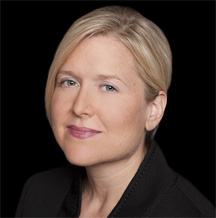The Case For Annual Eye Exams: Normal Vision Doesn’t Guarantee Healthy Eyes
 You probably see your primary care physician once a year, and your dentist twice a year. But how often do you see your eye doctor? Vision is the most valued of the 5 senses, and yet Americans don’t seem to be making regular eye exams a priority. A recent CDC survey suggests that as many as 34.6% of adults over the age of 40 (with moderate to severe visual impairment) believe that they don’t need regular eye exams. About 39.8% of the respondents said that they didn’t get regular exams because they were too costly, or because their health insurance didn’t cover the expense.
You probably see your primary care physician once a year, and your dentist twice a year. But how often do you see your eye doctor? Vision is the most valued of the 5 senses, and yet Americans don’t seem to be making regular eye exams a priority. A recent CDC survey suggests that as many as 34.6% of adults over the age of 40 (with moderate to severe visual impairment) believe that they don’t need regular eye exams. About 39.8% of the respondents said that they didn’t get regular exams because they were too costly, or because their health insurance didn’t cover the expense.
Although cost may play a role in peoples’ thinking, a comprehensive eye exam costs as little as $45-50 at retail outlets. I suspect that the real reason why people don’t get regular eye exams is because they incorrectly believe that if their vision is stable, their eyes are healthy.
A comprehensive eye exam is a type of medical check up – it is not just a vision assessment. Eye care professionals can diagnose everything from glaucoma and cataracts to high cholesterol, diabetes, high blood pressure, and even neurologic conditions such as brain tumors and multiple sclerosis. The eyes are more than a “window to the soul” but a window to general physical health. And the good news is that exams are relatively inexpensive and painless – so please consider making them part of your yearly health maintenance routine.
And to my primary care friends – don’t forget to encourage your patients to get annual eye exams. As the CDC notes:
Recommendations from primary-care providers can influence patients to receive eye-care services; persons who had visual screening during routine physical examinations had better eye health because of reminders to visit eye specialists. Public health interventions aimed at heightening awareness among both adults aged ≥65 years and health-care providers might increase utilization rates among persons with age-related eye diseases or chronic diseases that affect vision such as diabetes.
I myself have had an unexpected diagnosis during an eye exam, and feel passionate about the importance of preventive screening. In fact, I’ll be the upcoming host of a new eye health education initiative – a radio show called, “Healthy Vision with Dr. Val Jones” supported by ACUVUE brand contact lenses. The first show will be released here today, and it’s also available at Blog Talk Radio.
References:
Reasons for Not Seeking Eye Care Among Adults Aged ≥40 Years with Moderate-to-Severe Visual Impairment — 21 States, 2006–2009. Morbidity & Mortality Weekly Report, May 20, 2011. 60(19);610-613
Alexander RL Jr., Miller NA, Cotch MF, Janiszewski R. Factors that influence the receipt of eye care. Am J Health Behav 2008;32:547–56
Strahlman E, Ford D, Whelton P, Sommer A. Vision screening in a primary care setting. A missed opportunity? Arch Intern Med 1990;150:2159–64
Disclosure: Dr. Val Jones is a paid consultant for VISTAKON®, Division of Johnson & Johnson Vision Care, Inc.



 Intraocular pressure is usually measured by applying a force on the cornea using a tonometer. Although sufficiently accurate, tonometers are only used in ophthalmologist offices and so don’t measure intra-day pressures. They also fail with people post cataract surgery that have a thicker cornea. Researchers at University of Arizona have developed a new device that measures intraocular pressure through the eyelid.
Intraocular pressure is usually measured by applying a force on the cornea using a tonometer. Although sufficiently accurate, tonometers are only used in ophthalmologist offices and so don’t measure intra-day pressures. They also fail with people post cataract surgery that have a thicker cornea. Researchers at University of Arizona have developed a new device that measures intraocular pressure through the eyelid. Researchers at the University of Florida in Gainesville have developed a vitamin E-secreting contact lens that can bring the valuable antioxidant directly to eyes.
Researchers at the University of Florida in Gainesville have developed a vitamin E-secreting contact lens that can bring the valuable antioxidant directly to eyes.







